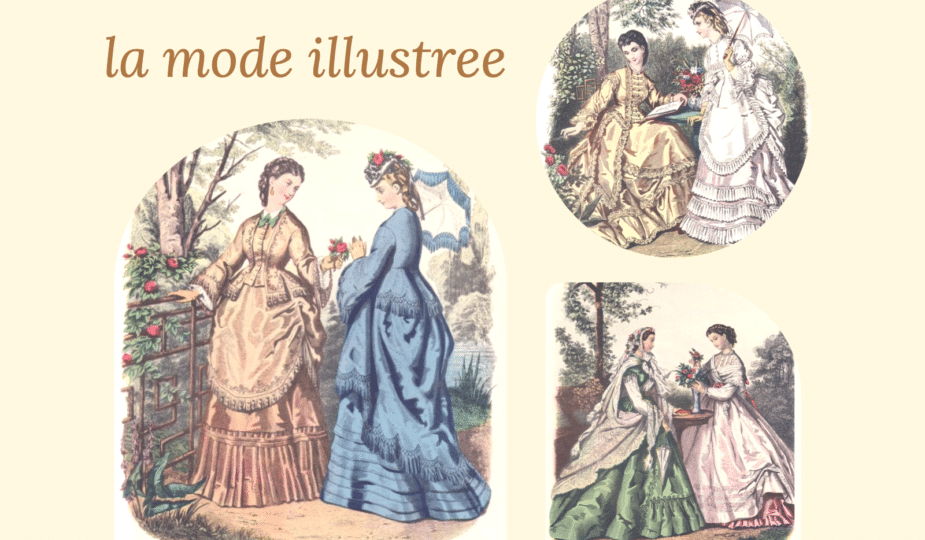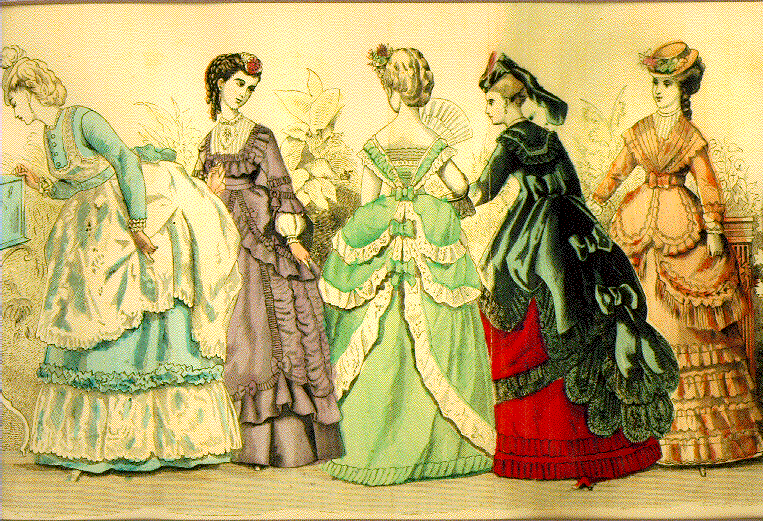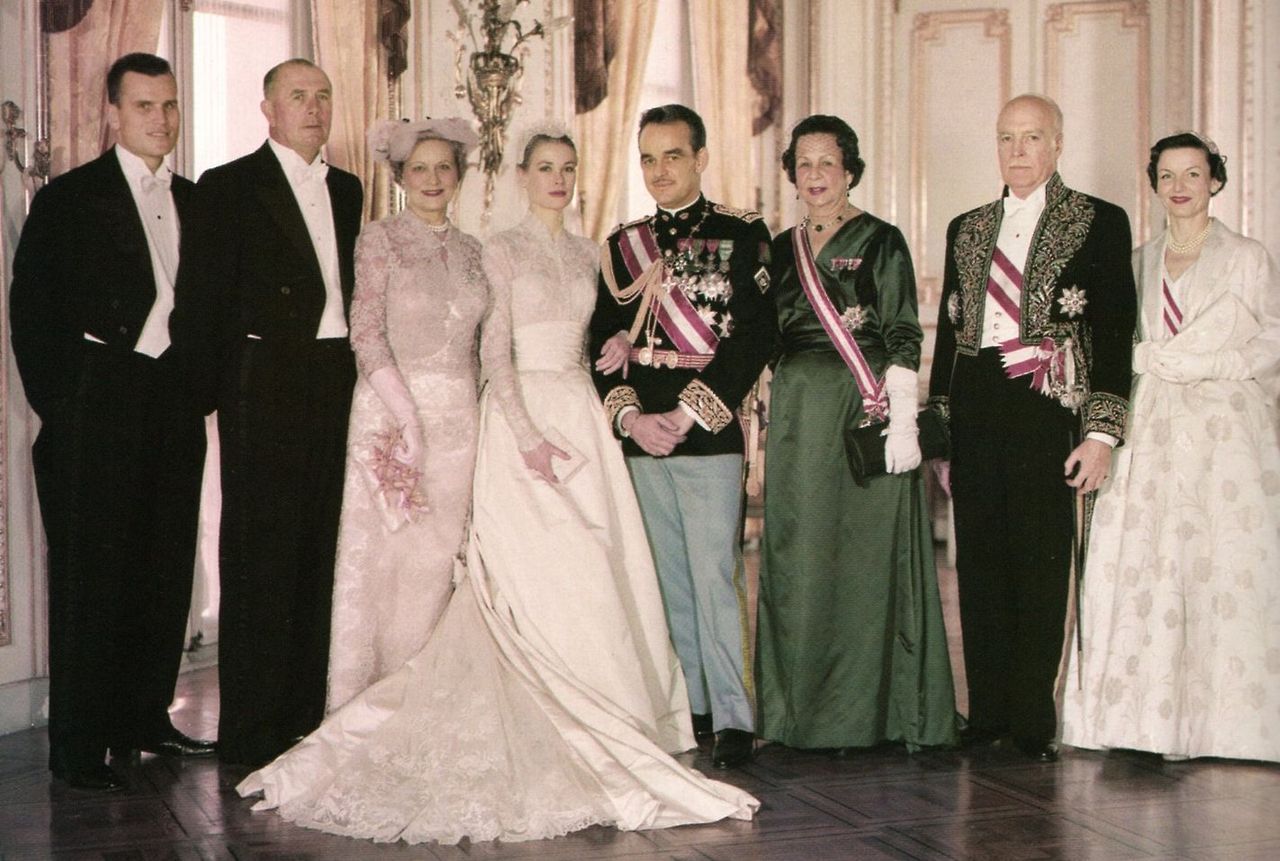By Pauline Weston Thomas for Fashion-Era.com
- An Original Fashion Plate of 1889
- Assessing a Genuine Fashion Plate from a Reprint
- 4 La Mode Illustrée 1950's Reprints of 1860s and 1870s Fashion Plates
- Colour Printing and Trademark Stamps.
- Other Reprints - Dover Books and Reprinted Fashion plates
- Modern Reprints of La Mode Illustrée
An Original Fashion Plate of 1889
La Mode Illustrée was first published in 1859 in Paris and of course was in French. It is difficult to find out much about the actual publishing history of the French magazine itself, although Dover reproduction books of La Mode Illustrée are well documented and available on almost every costume website. La Mode Illustrée was one of the most important French magazines of the late C19th that carried on well into the twentieth century.
La Mode Illustrée 1889
La Mode Illustrée was published weekly on Sundays, with illustrations and descriptions of Victorian fashions and the latest must-have accessories. There was always a fashion plate. La Mode Illustrée set the standards for a circulation of 20,000 fashion-conscious stylish women. The fashion plates being large are very attractive 34cm by 27cm. For interior display purposes, they can be made to appear larger when a mat mount is added to a frame.
The La Mode Illustrée above is one of three I have in this timeframe. They were bought some 15 years ago in 1990 or so, and cost me £45 for the three related plates. Prices will vary, but you should be able to buy original plates for under £20 a piece even today, especially at eBay or Ruby Lane.
However, the more rare, unusual or pristine the condition of the fashion plate, the higher the end cost. Antiquarian rare book seller's donaldheald.com sell equally rare engravings. Expect to pay about £450 for a rare fashion plate like those of Donald Heald Georgian hairstyle fashion plates at Gallerie des Modes et Costumes Français.
Assessing a Genuine Fashion Plate
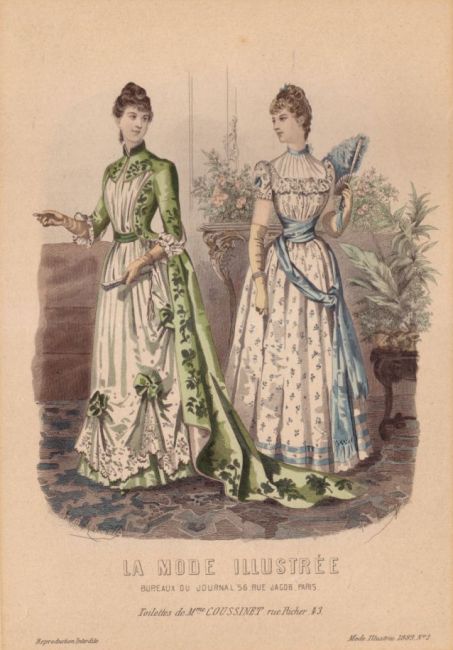
I bought this La Mode Illustrée fashion plate 20 years ago at an antique fair, long long before the days of eBay surfing. Let's look at the differences between this antique plate and reproduction plates. Bear in mind that La Mode Illustrée has been reprinted many times in the C20th. Remember an antique is 100 years old or more. How paper ephemera like this survives is down mainly to the beauty of these items. People cannot bear to throw them away.
For the same reason, people love reproduction images of these plates too. This is just the sort of item great grandma would have kept in a carefully stored place and brought out on occasion to show children. On this page, I examine a genuine antique fashion plate and on the next page a typical reproduction print.
If you enlarge the image below for clarity, you will notice several factors that point to this fashion plate being a genuine antique. At first glance, I would date it at say 1890, but it's nice that the date of 1889 is there in the bottom right-hand corner.
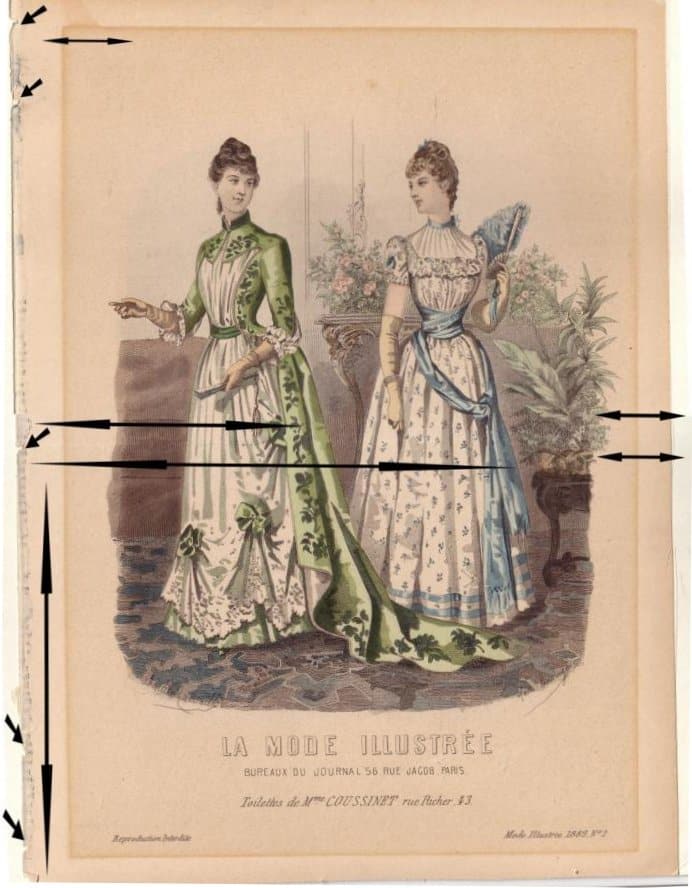
1. In the La Mode Illustrée enlargement you will notice the weak fold mark which is highlighted between the two long central arrows. It's not a heavy mark, but it is there.
Images were sometimes folded in magazines and also of course a magazine this size would have been folded just as we might fold a newspaper. This fold is not very visible without study. The print is very flat because the fashion plate was purchased already glued to a piece of mounting card. Removing it from the card would have ruined it.
2. Next look at the far left side and notice two important factors. One is the small long strip of adhering printed material with some French writing from the attached printed page that has remained when the fashion plate was separated from the page directly above it.

3. Now look at the holes that have pulled away where thread is sewn to hold the publication together. This has been removed or simply pulled away with wear and tear.
Some of these rounded holes are shown with the small arrows running up the left side.
4. There are genuine foxing spots (brown marks) at the top of the image. No seller would deliberately sell a piece with foxing if they could help it, because it does detract and make the item sell for less, especially when the spots are on the face or occur centrally. Any antique image with foxing on is worth much less than one which is pristine. This is why some fashion plates at antiquarian booksellers are hundreds of pounds or dollars compared to much lesser amounts elsewhere. Condition affects value even with a genuine antique fashion plate.
5. The feel of this paper is smooth and a quality magazine weight for a usual fashion plate from this magazine. Most fashion plates like these are on smooth paper although earlier ones of other plates are often made from laid paper which has a linear texture.
Reproductions are often printed on special art papers with texture or made to look like laid paper or have a vellum effect.
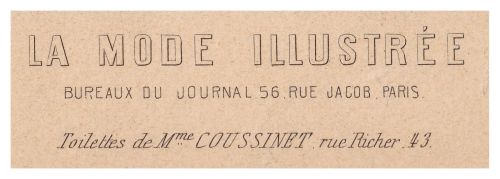
6. Finally the magazine publishing house has included the address. Although some reprints do this, many omit this bit.
Please DO NOT write to me asking for advice on your fashion plate as NONE can be given.
None of this of course guarantees that your fashion plate has not been dabbed with a tea or coffee soaked cotton wool ball to age it.
Although this does not apply to all fashion plates a number in the corner such as this may give some credibility to a particular plate. I have chosen this plate number to show you as it contains lots of other information which is also important.
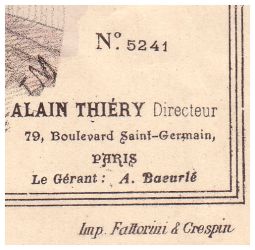
Assessing a Genuine Fashion Plate
These eight La Mode Illustrée late Victorian fashion plates below are reproduction prints and belong to me by choice. They were bought some time ago from an eBay seller. The seller who sold these to me stated honestly in her sales spiel that they were early 1950s reproductions of La Mode Illustrée, possibly long stored overruns/seconds. In no way did she ever suggest they were antique fashion plates.
I cannot recall the exact price, but I know I paid £12.50 for the eight and was very happy with my purchase. The fact that they were not originals, in this case, did not matter to me, as I deliberately bought them to add colour to the website. So these are not antiques and I will point out the little differences below using these prints as examples.
All thumbnails enlarge to A4 size.
La Mode Illustrée 1950's Reprints of 1860's Plates
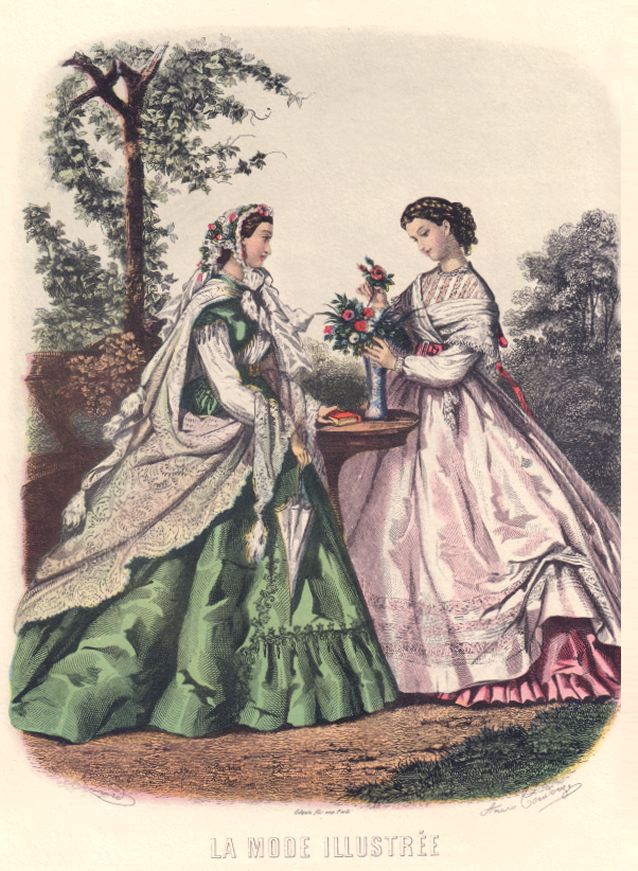
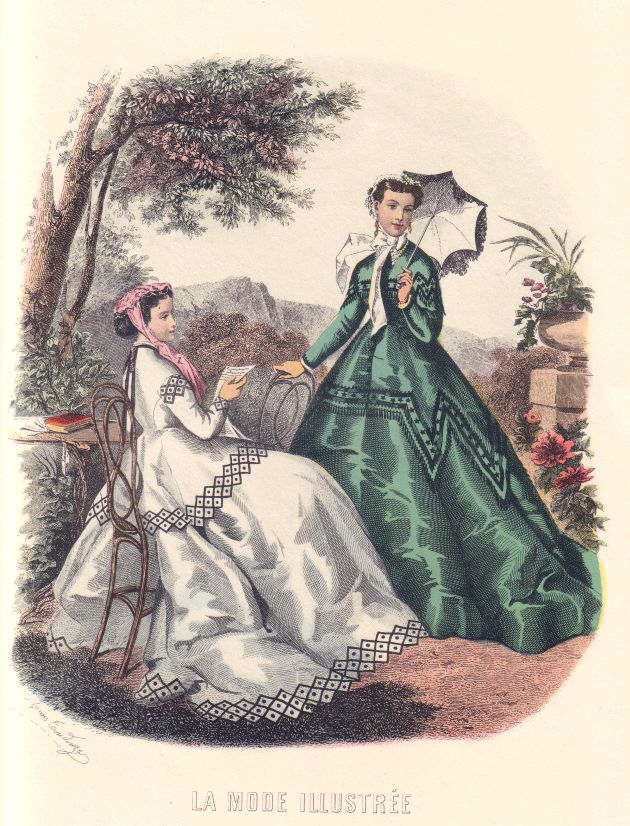
2 La Mode Illustrée 1950's Reprints of 1870's
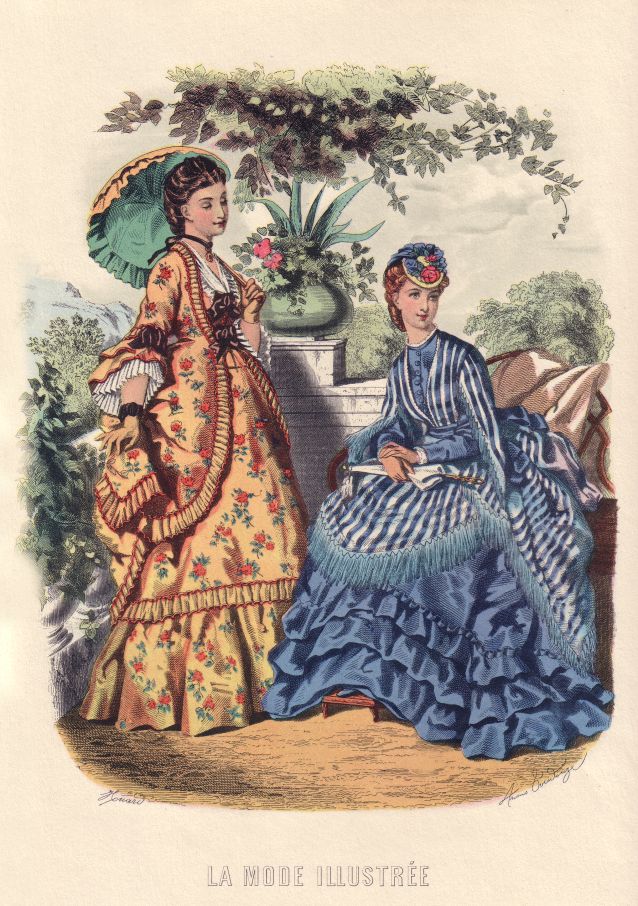
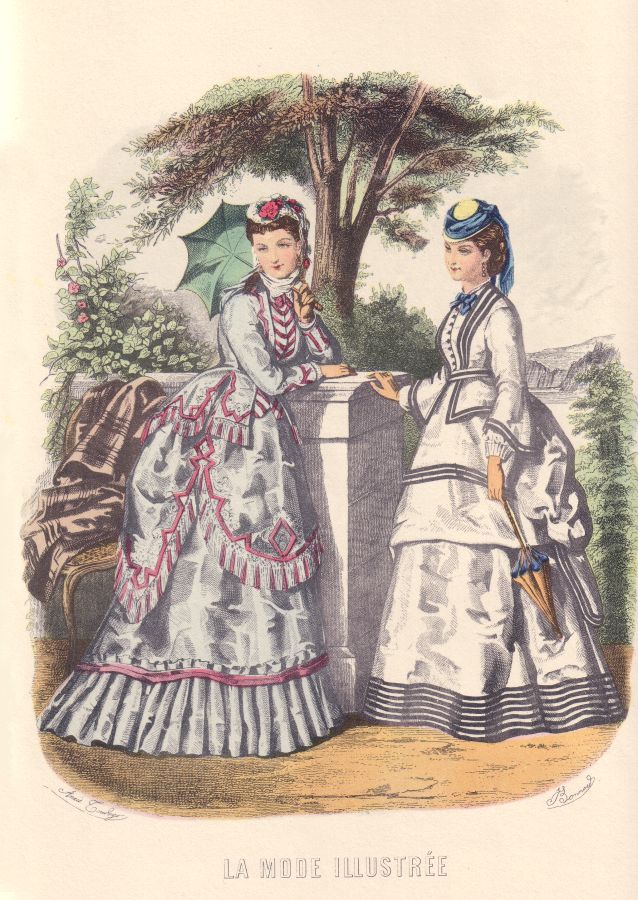
Above Reprinted Fashion Plates of La Mode Illustrée - Artist Anaïs Toudouze
The two fashion reprints from the 1860s era directly left, are the most charming from this set. Then the two early tabard polonaise bustle styles on the right of 1870s designs are the pair of fashion prints that a lot of people seem to wish to sell!
For some reason I have seen these two fashion plates to the right traded most frequently and of the set of 8 I think they are the least attractive. So must other sellers by the number of times they appear in sales.
The one on the left has very crude floral fabric colouration and the blue of the dress is super intense and garish and this may well fit in with the introduction of aniline dyes, but the execution lacks something.
The last is just a dull combination of colours compared to more pretty pretty fashion plates. These 4 images crop up on the internet time and again. The problem is many of their owners or their parents have had them 40 years or more, so convince themselves the reprints are old enough to be antiques.
Tell tale signs are the perfectly symmetrical sheets of paper they are printed on. Authentic fashion plates are often on comparatively fragile paper not much thicker that the sort of quality paper you might use in a laser printer. One spine edge is likely to be rough. These reproduction prints are printed on heavier evenly ecru toned watercolour type paper. But the other antique Mode Illustrée plates I own are on smooth paper, delicate colour application and they have real age marks or foxing!
According to one art and antique forum these 1950s reprints have a low resale commercial value of between £5 and $35 dependant on condition. I can tell you from my research there are a lot of these particular prints about - far more than would have realistically survived 100 years in my opinion.
To many these prints look authentic, but bear in my mind though that if this particular clutch of reproductions was printed in the 1950s then at 50+ years these really are vintage prints. Just be aware this particular 8 are not the original version of the prints.
But they still make a pretty picture! So you pay your money and make your choice.
La Mode Illustrée Reproduction Prints - 1870s
Reproduced Fashion Plates for La Mode Illustrée - Artist Anaïs Toudouze
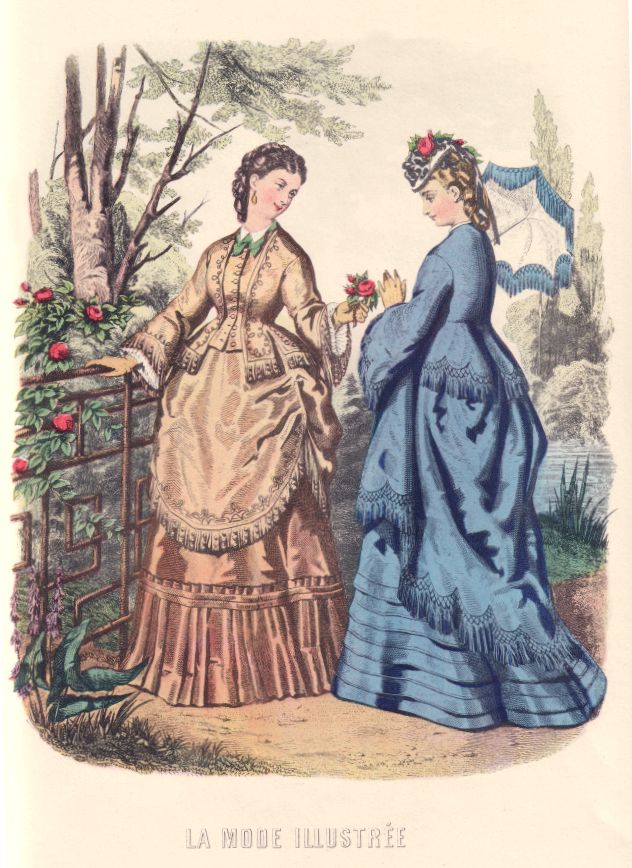
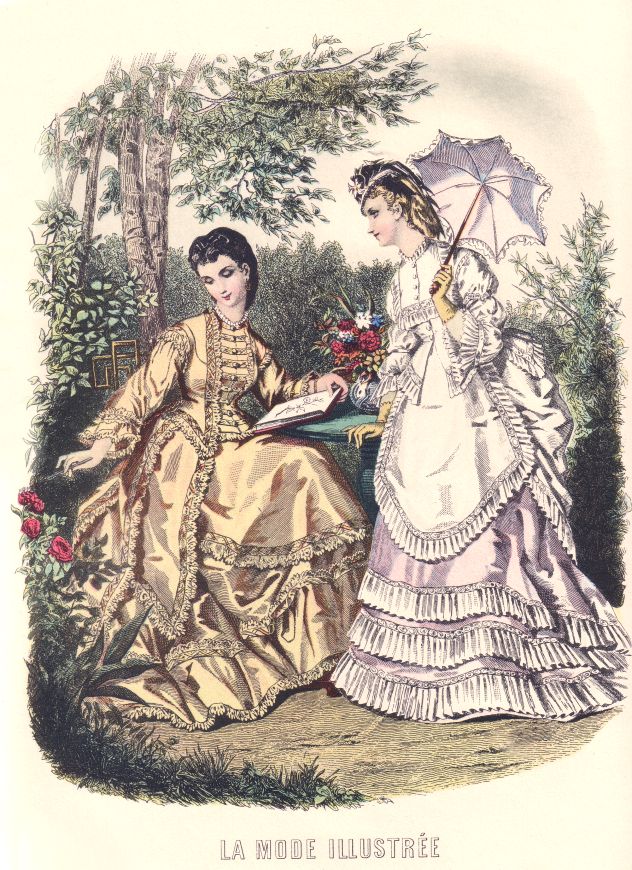

The original colour in these fashion plates is far cruder and I have lightened them for my purposes on the site. But the overall images are very chocolate box pretty and I like them as they are ultra feminine even though they are totally impractical fashion wear.
There were many printing marks that I have cleaned up too and each print bears a tiny printers trademark logo. I say buyer beware. If you like a fashion plate print and it is a 50 year old reproduction or a modern reproduction that is perfectly fine. But please do not try to sell them as antiques or buy them believing they are true antiques.
Colour Printing and Trademark Stamps.
The printing on these 1950s reprints is very crude compared to the image of the same era. Look at the printing overlap on this hand above here - the colour has really flooded far more than it should have. Good overprinting avoids this.
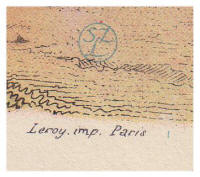

The prints have this impression information on them plus a number below 10. Above this is a circular logo stamp with SZL printed in blue. This is the second printer signature and circular logo trademark.
Although I was personally pleased with this low cost purchase I do feel annoyed that some sellers are passing these same images off as antiques.
Buy them for what they are - reproduction prints. But please DO NOT write to me asking for valuation advice on them as none will be given - I will be unable to help you.
Other Reprints - Dover Books and Reprinted Fashion plates
There are many Dover fashion Plate books covering various eras. The plates in the Dover books are printed on good quality opaque paper that Dover state does not become Brittle or discolour with age and show through is minimal.
Be aware the colours are not as soft as on original antique plates and the paper surface is glossy. They are though perfect for all sorts of projects including framing and decoupage and are a boon to students of costume, dramatic productions and re-enactors.
This Fashion Plates Page Added 8 Oct 2005
